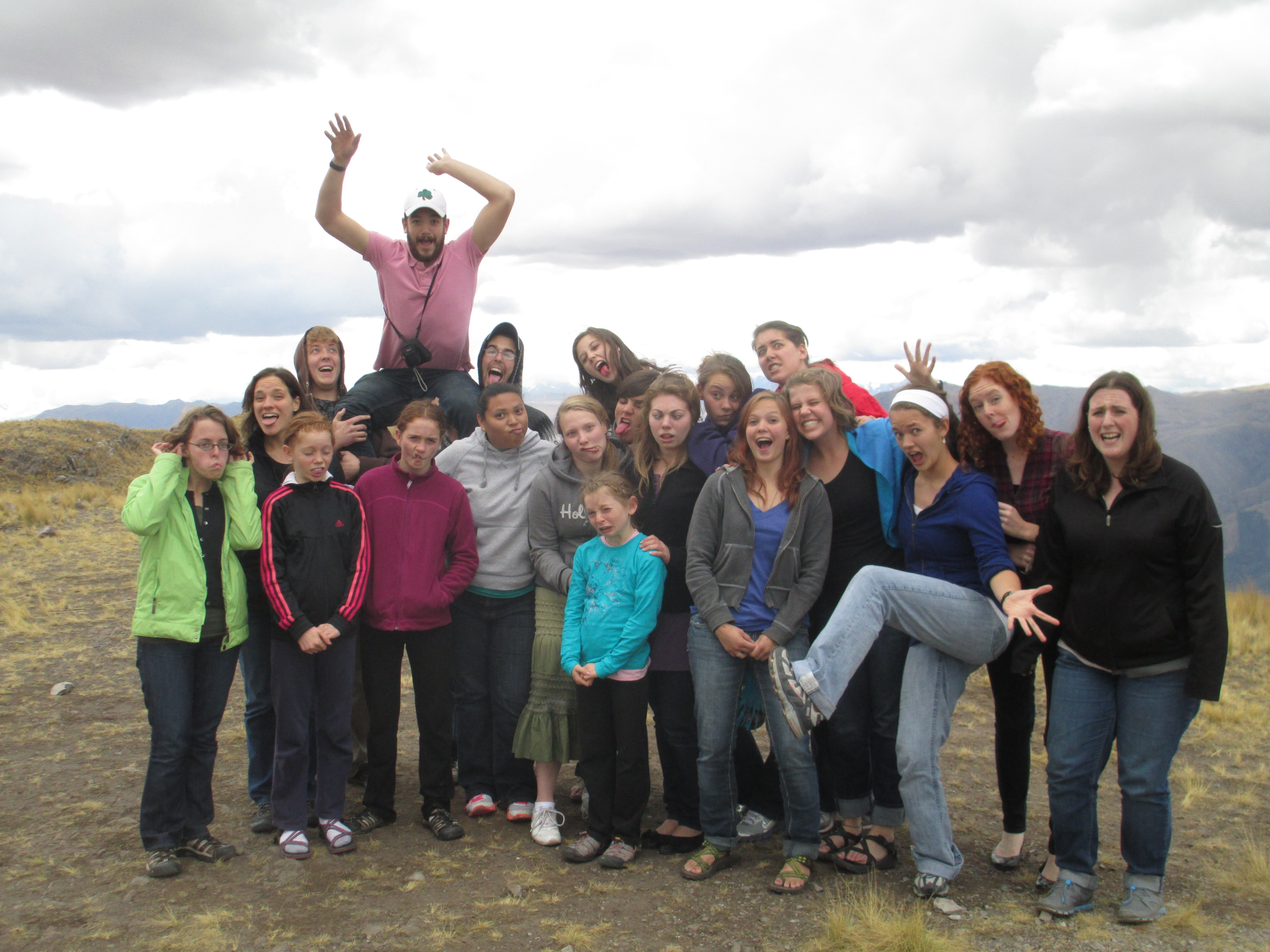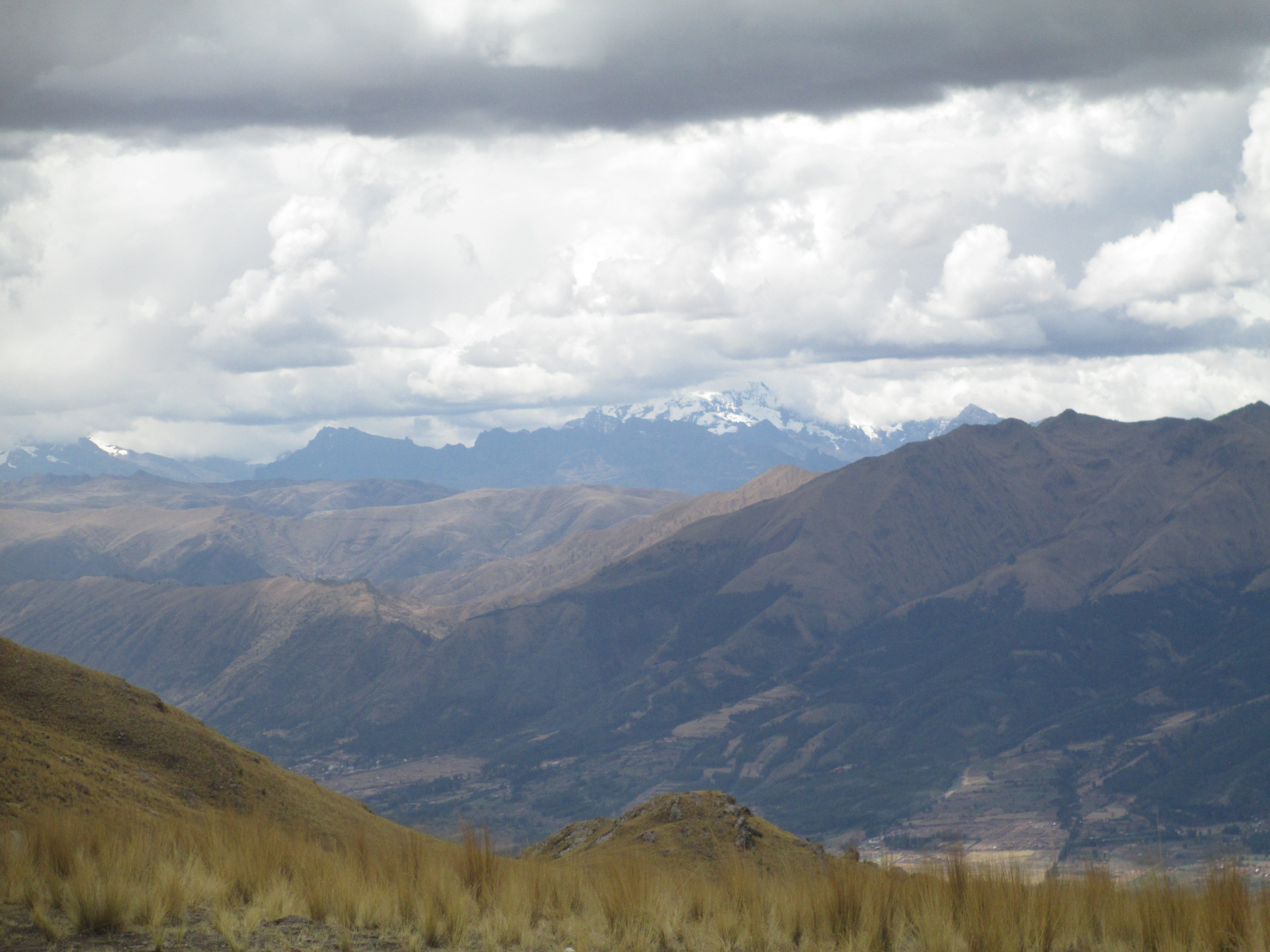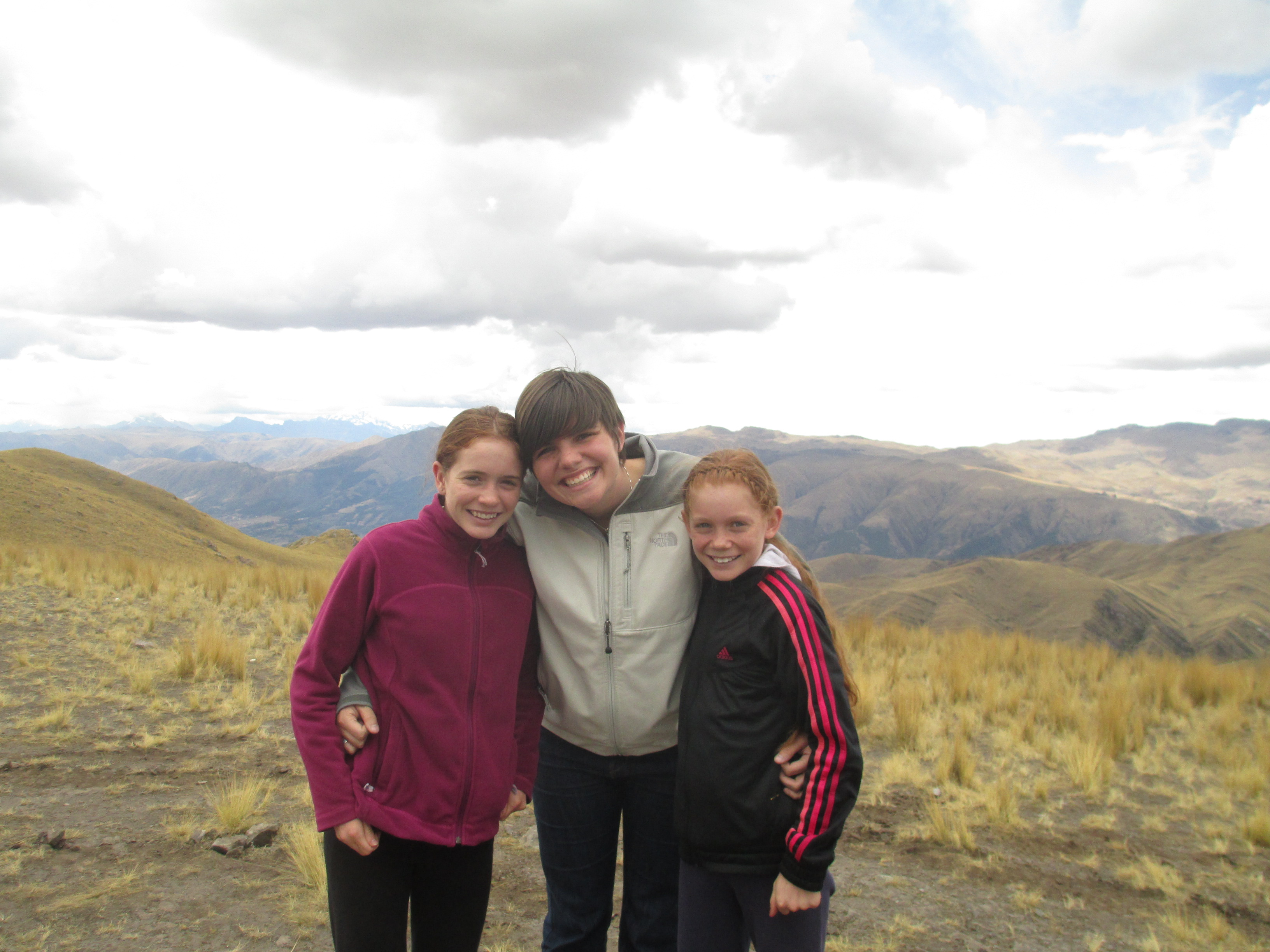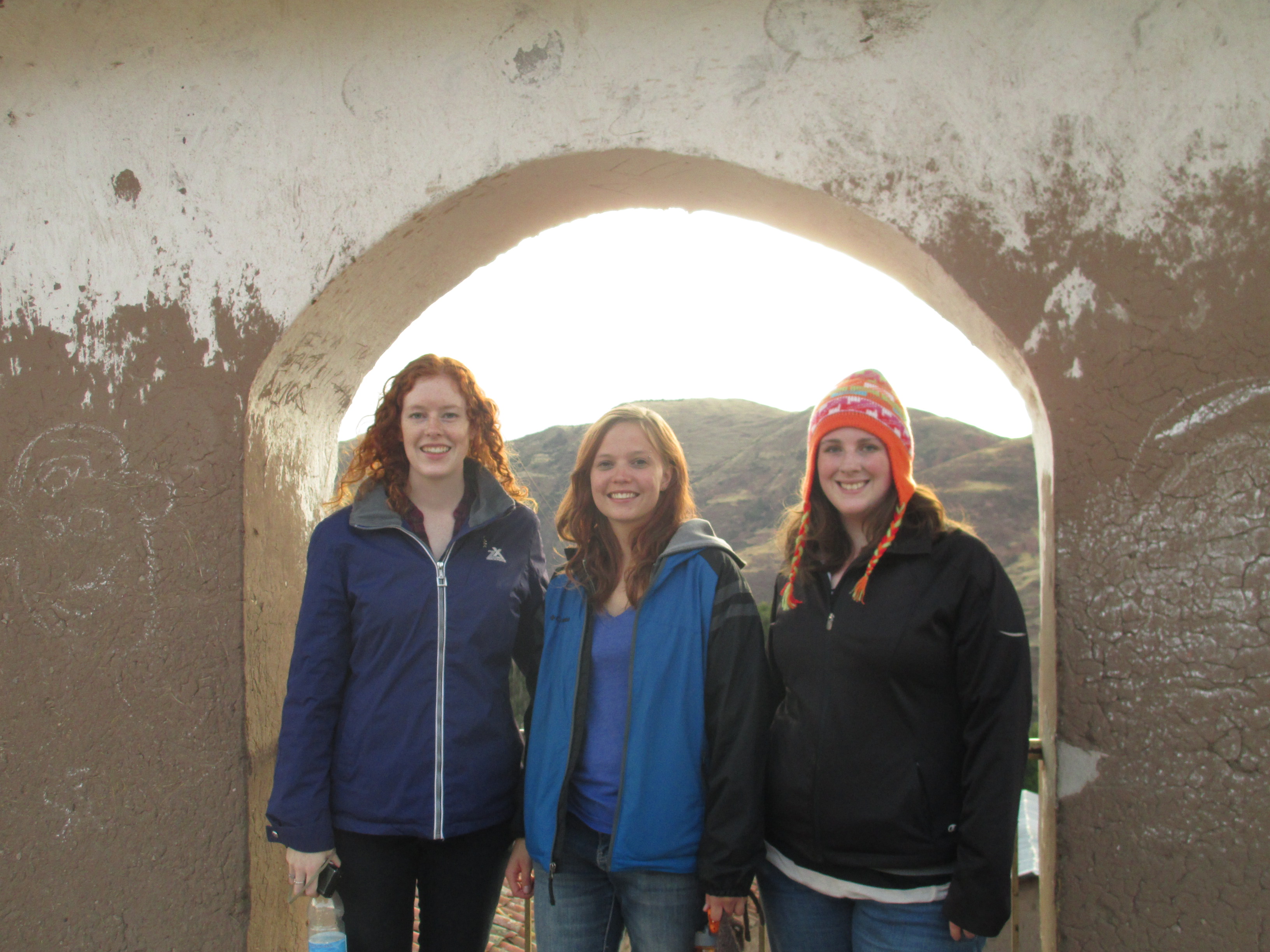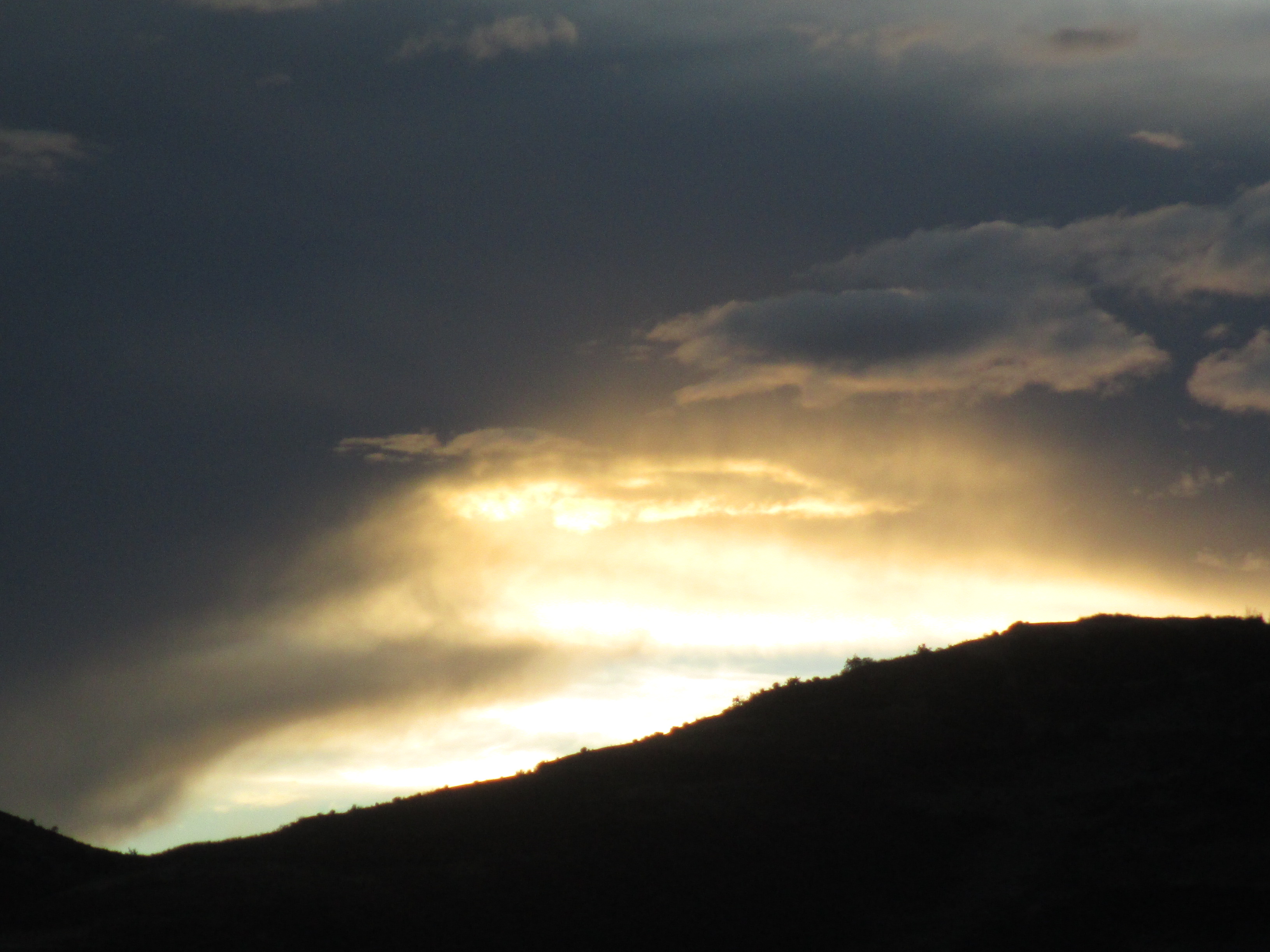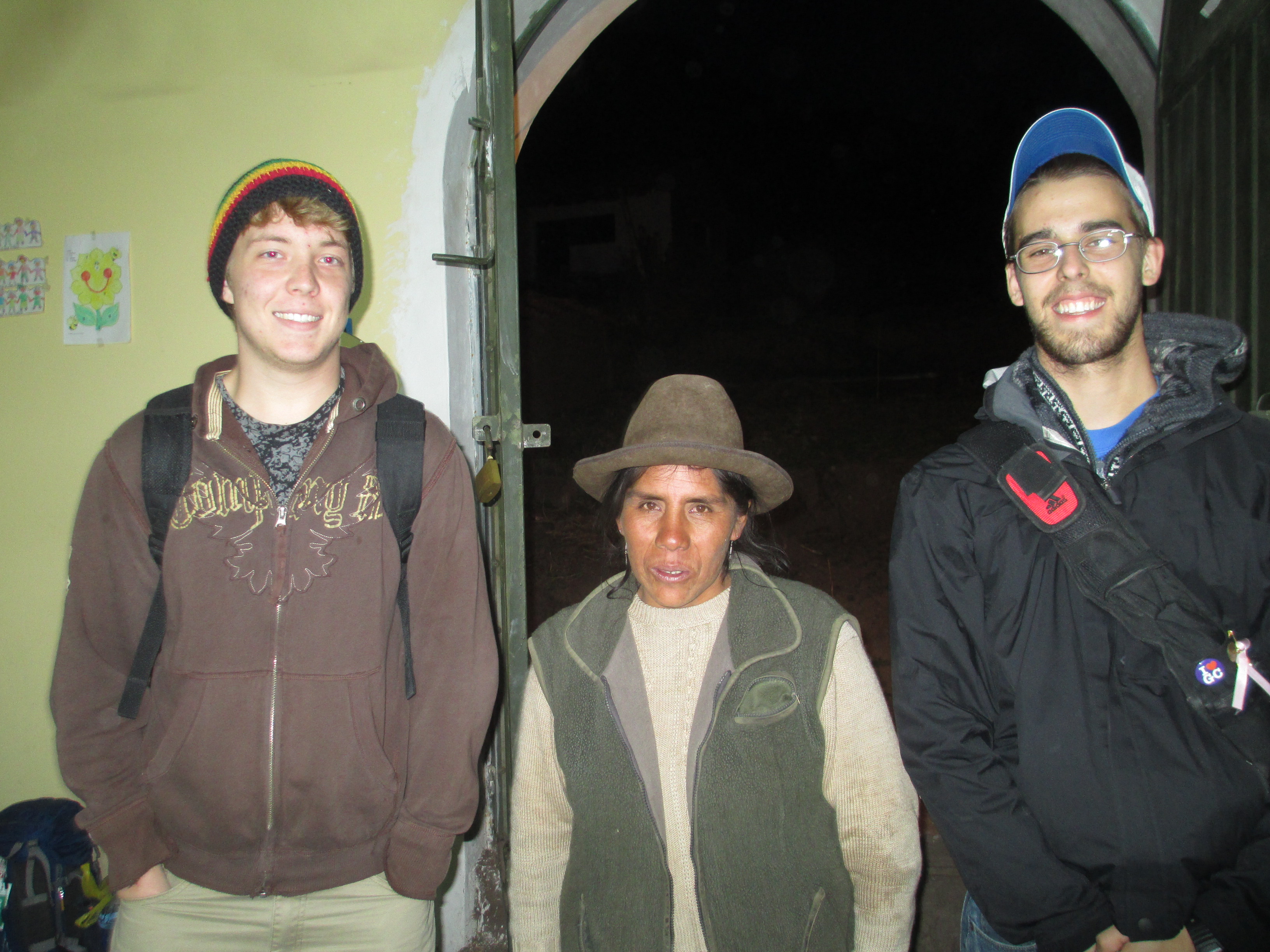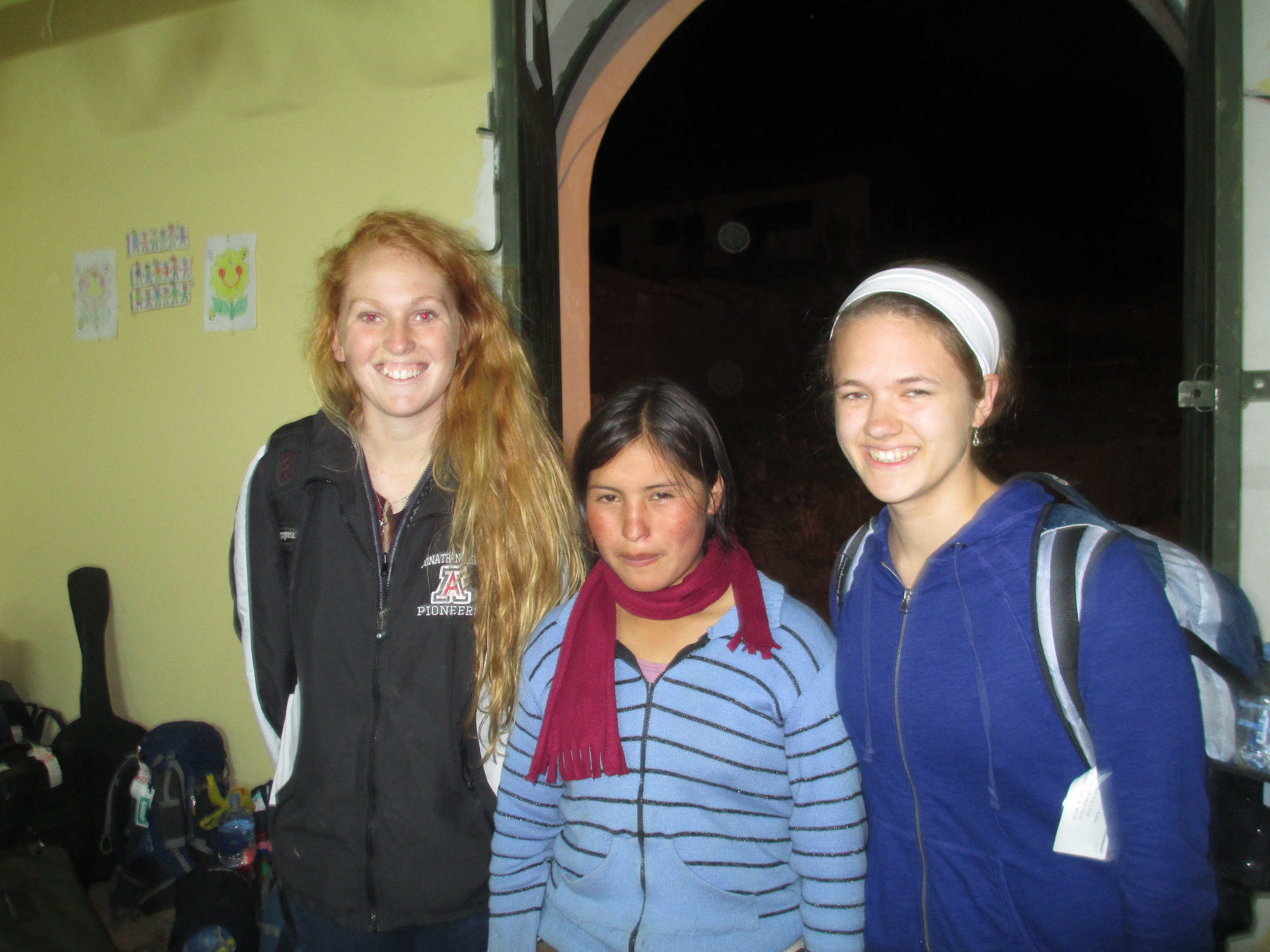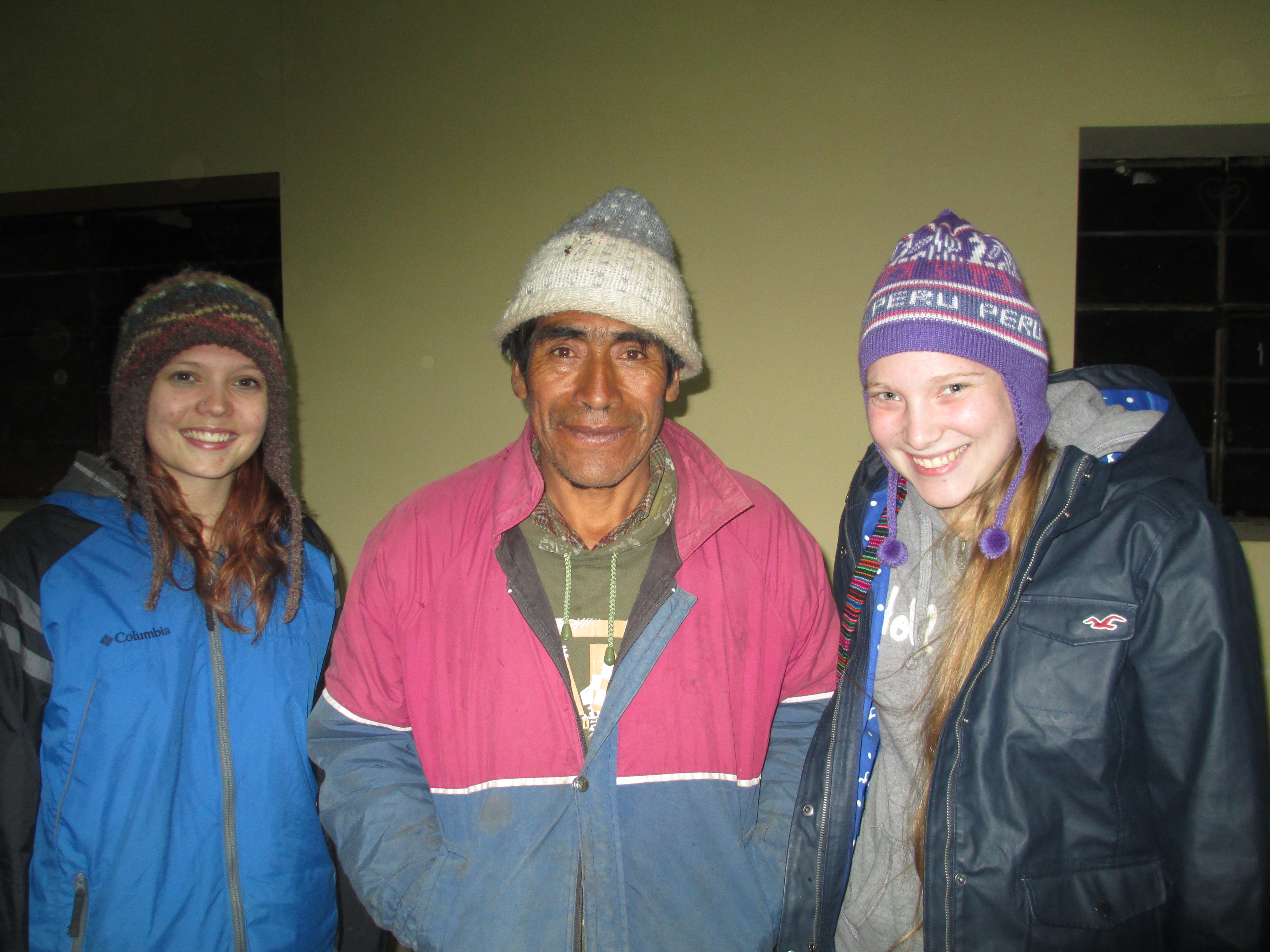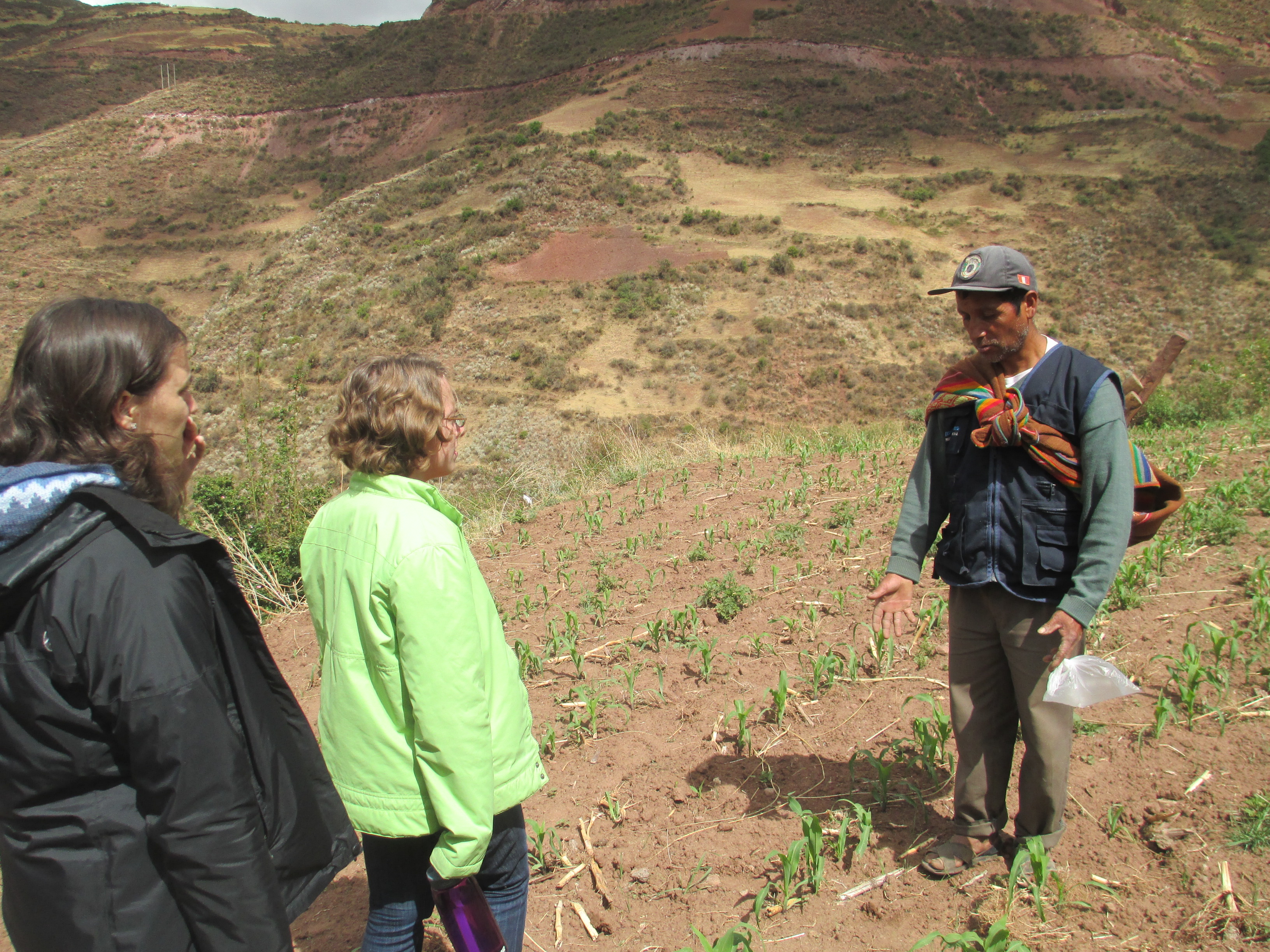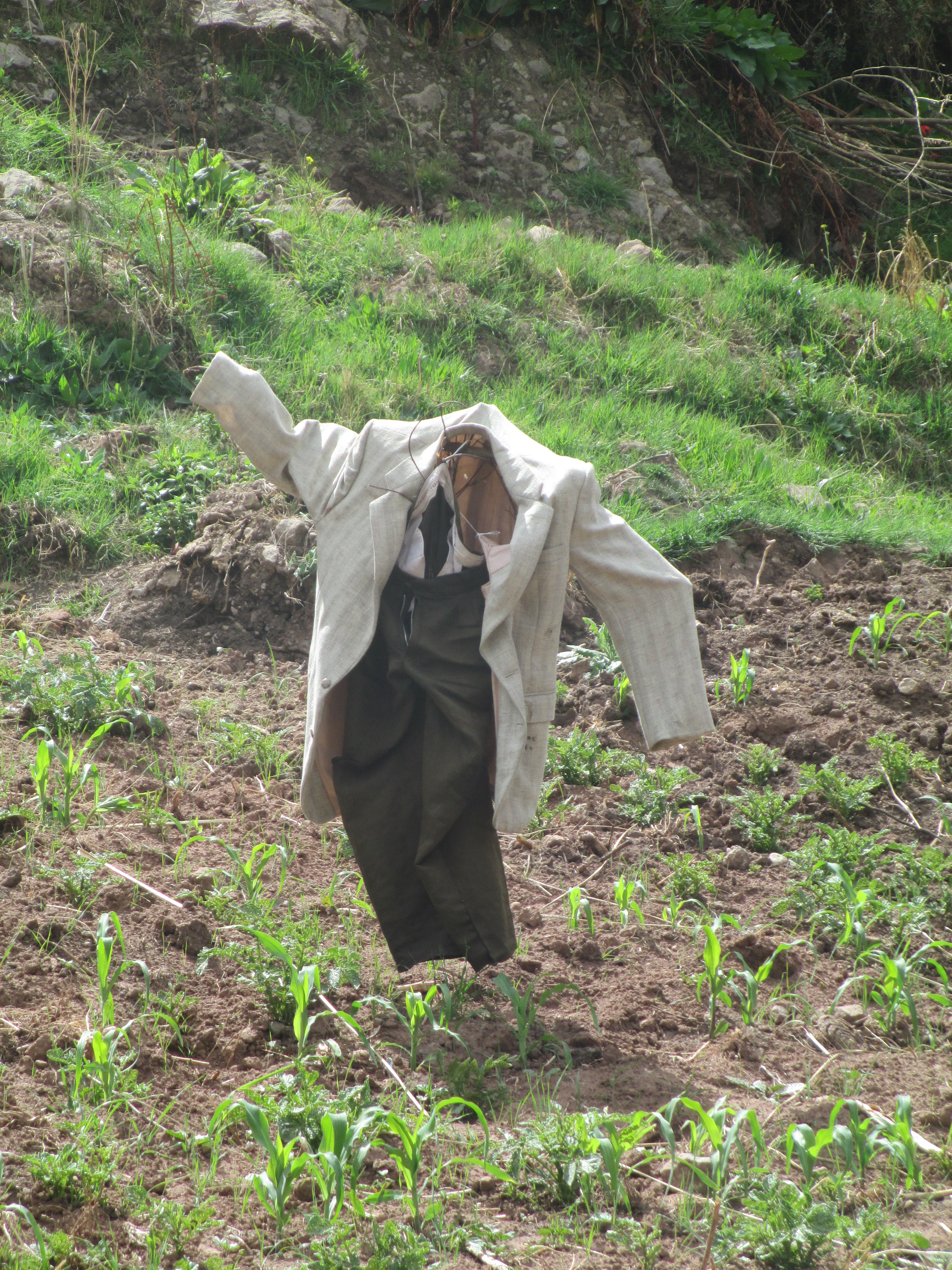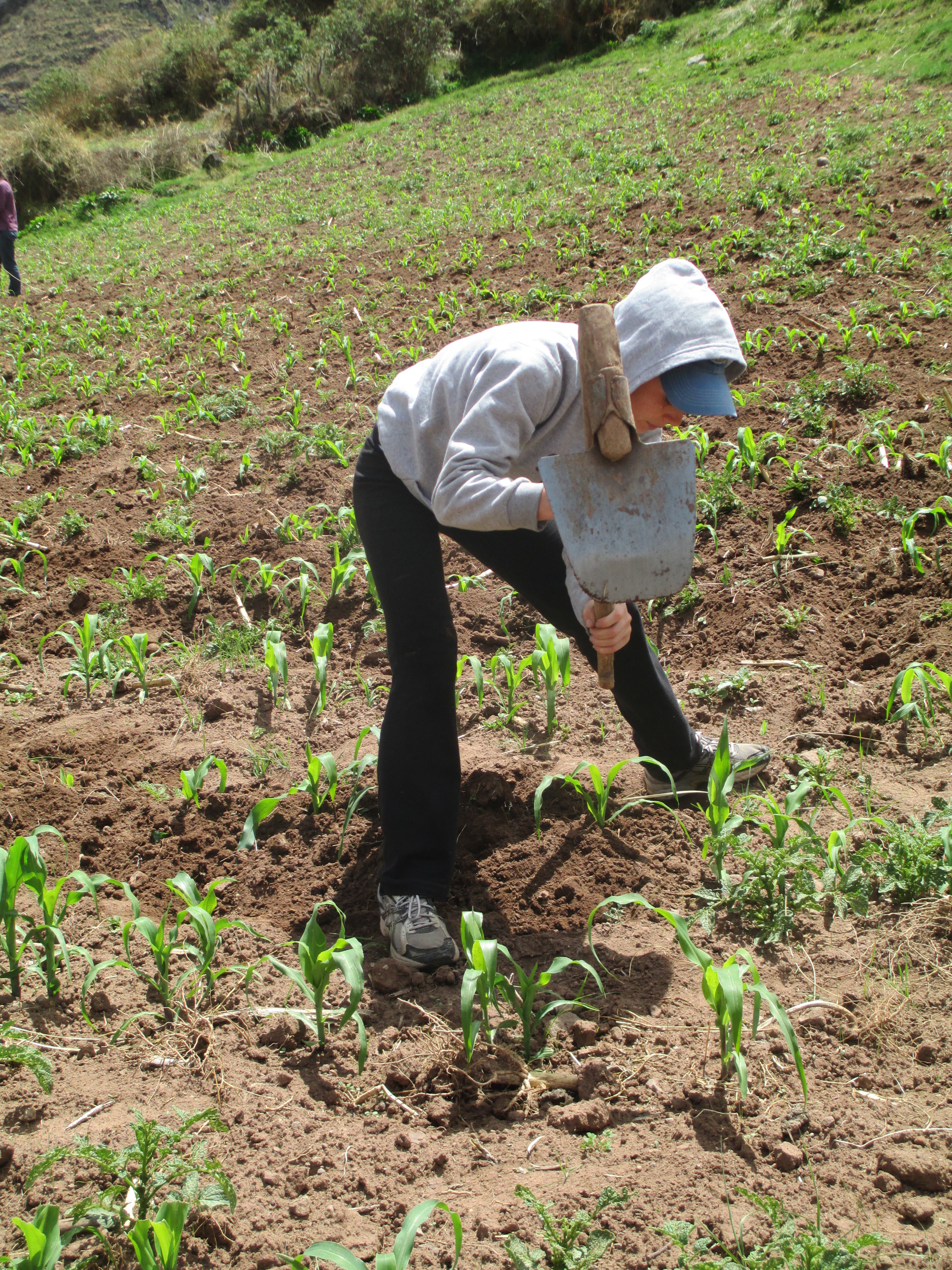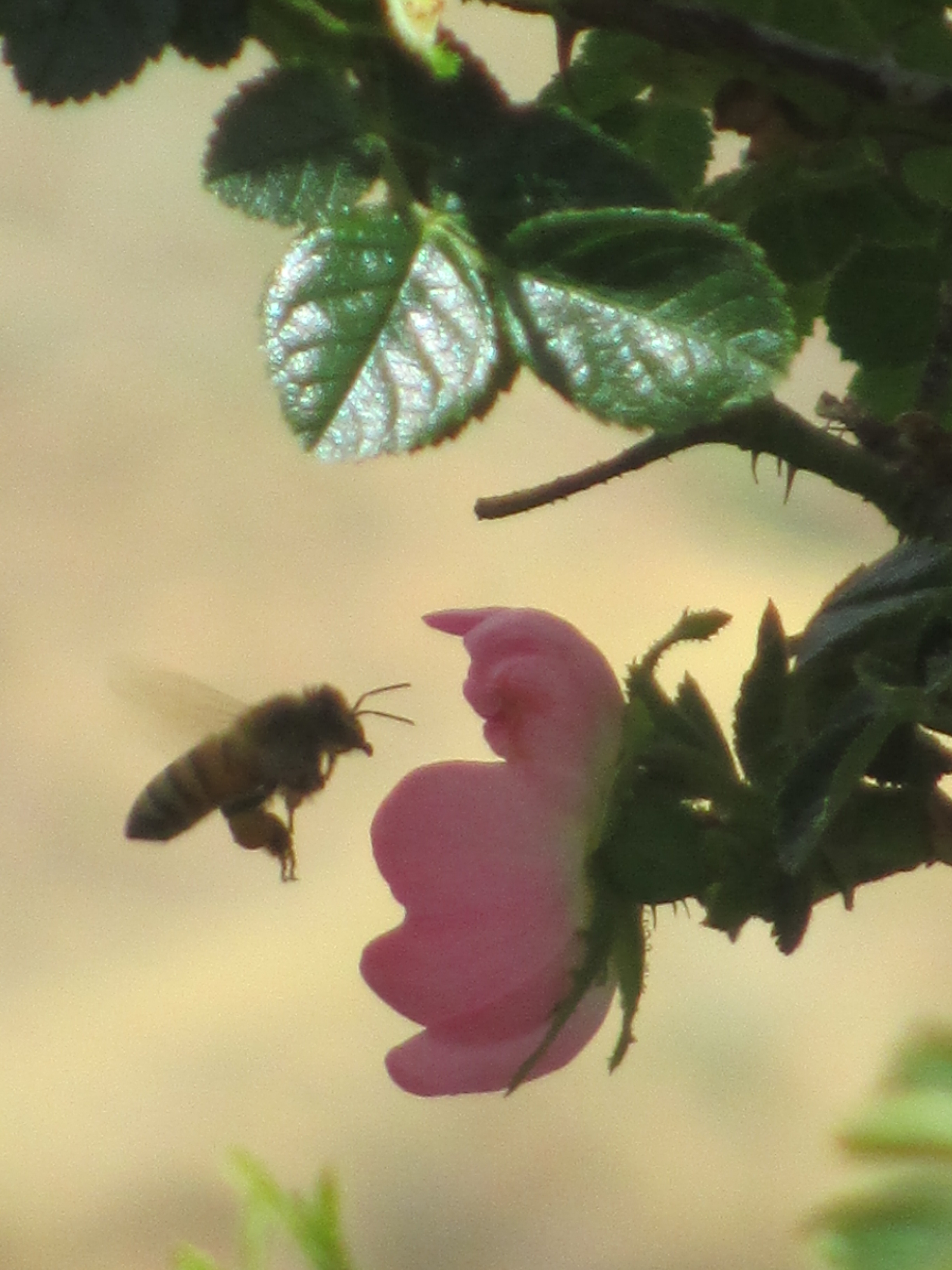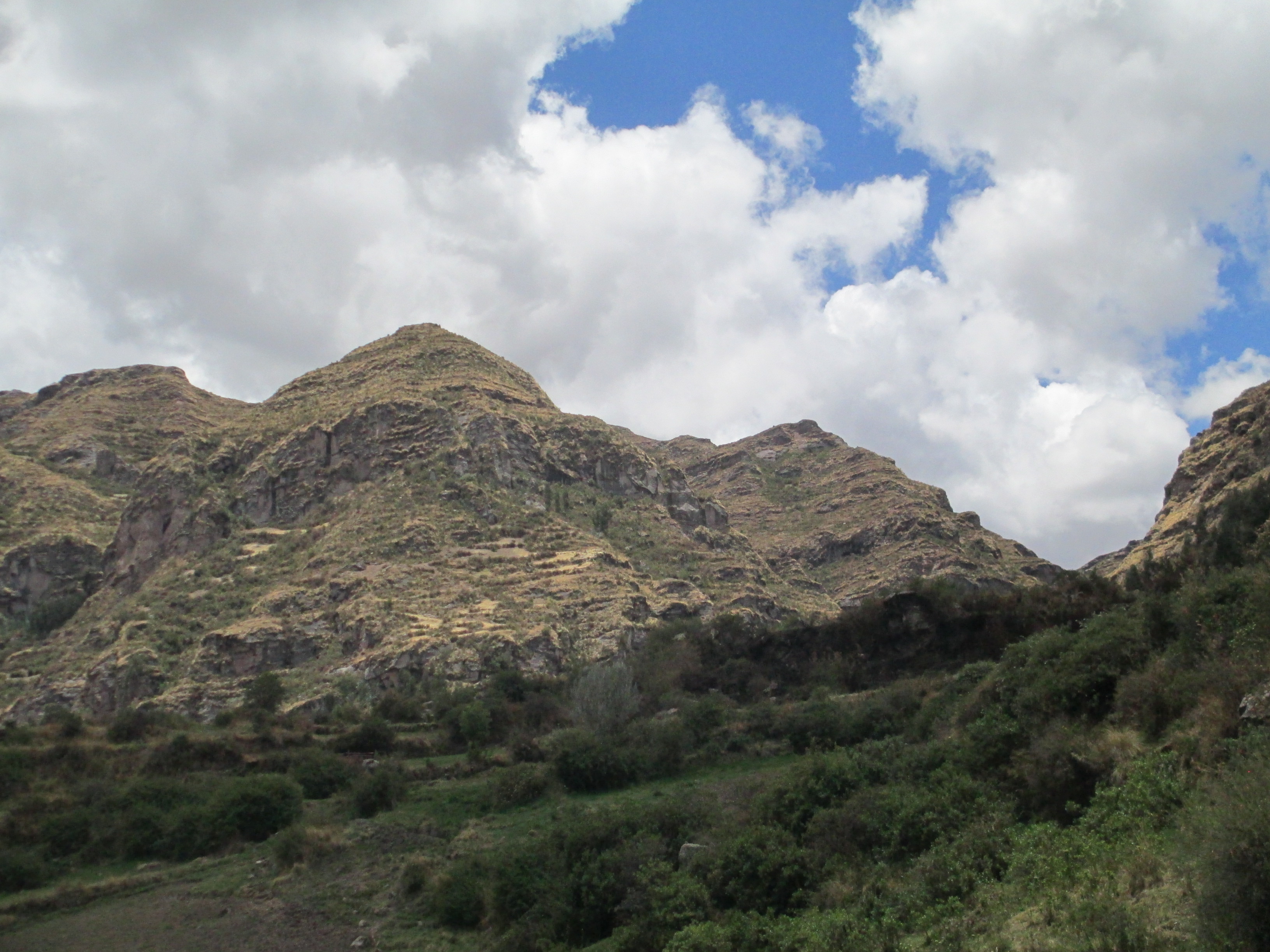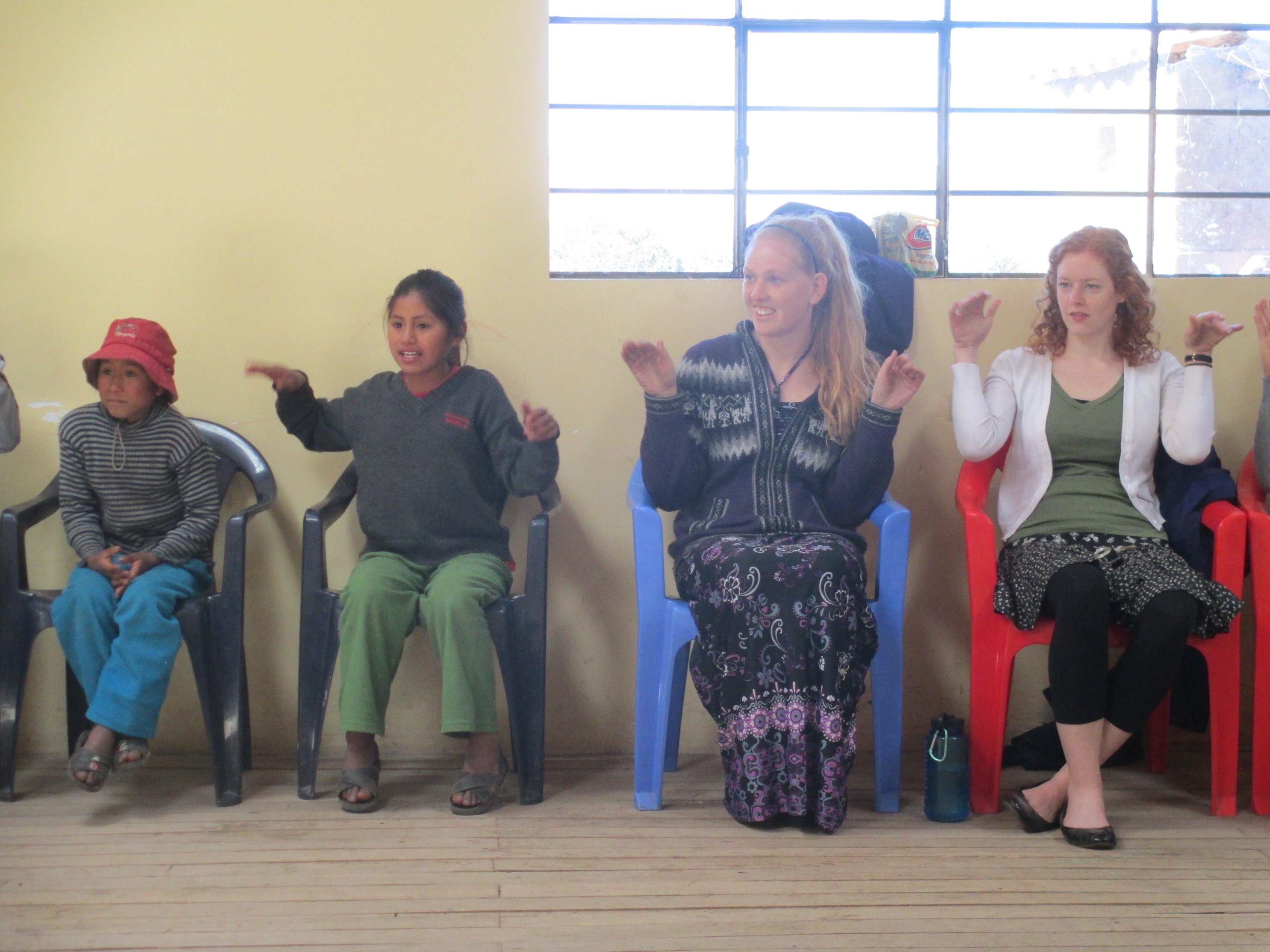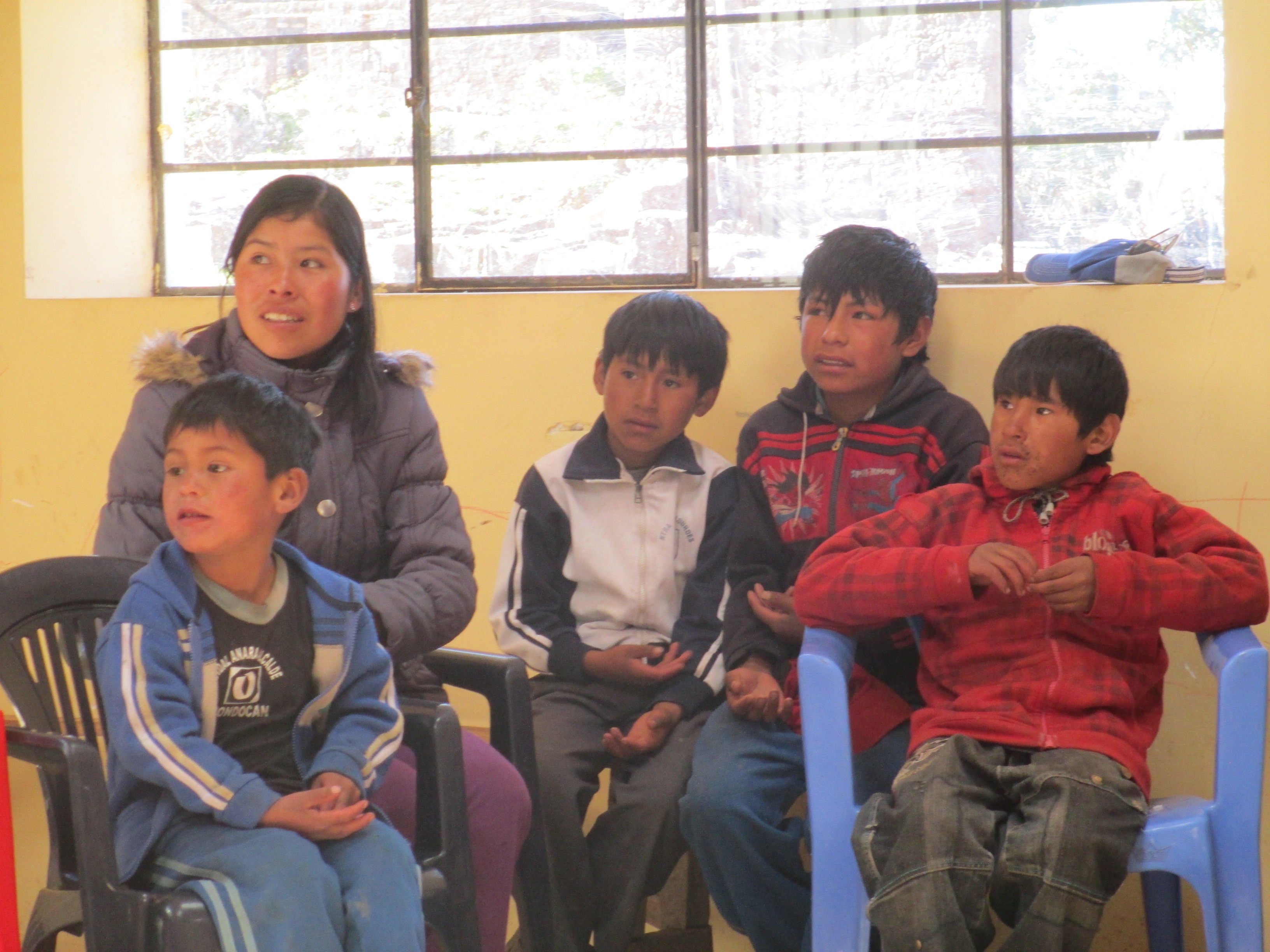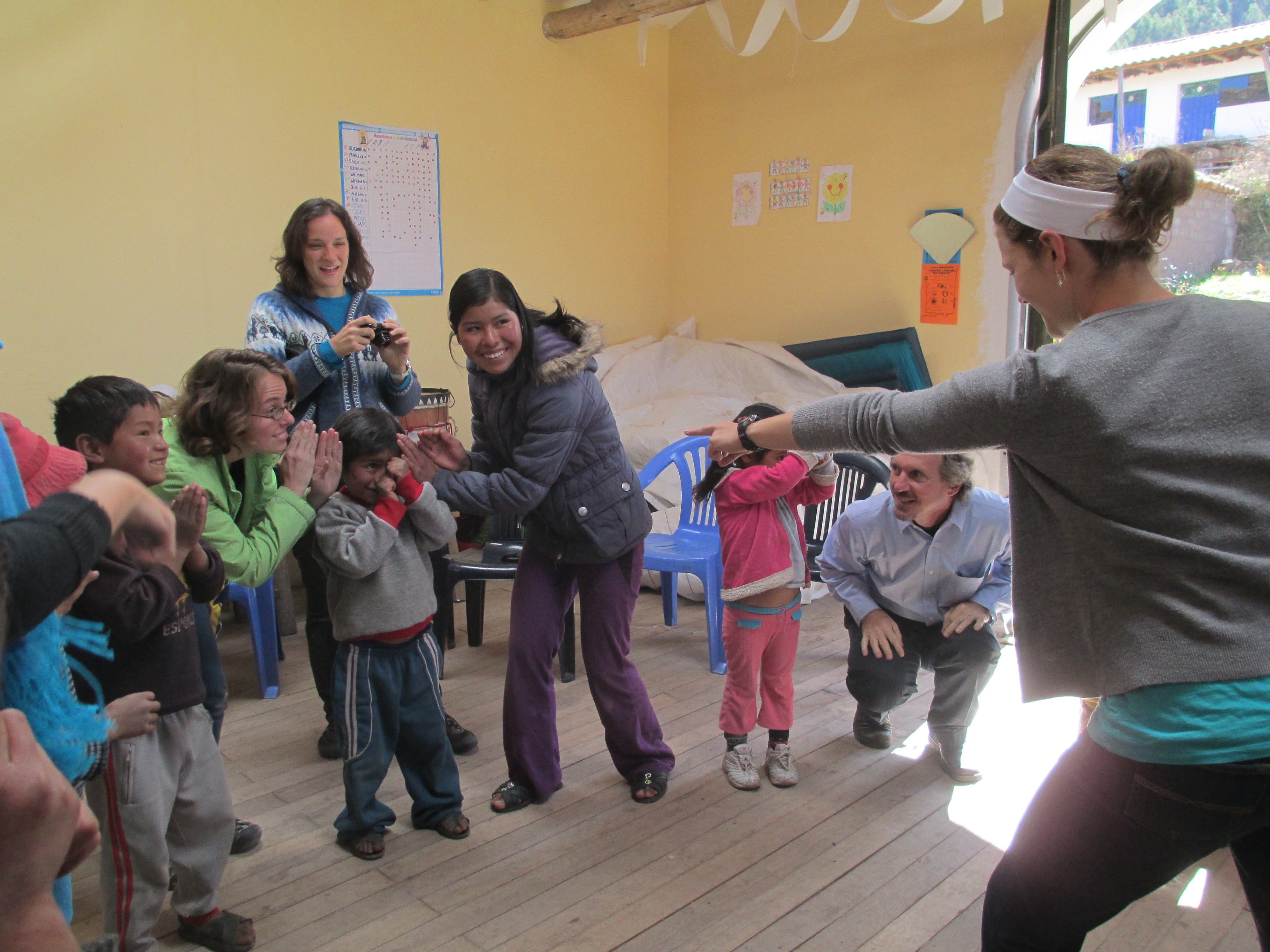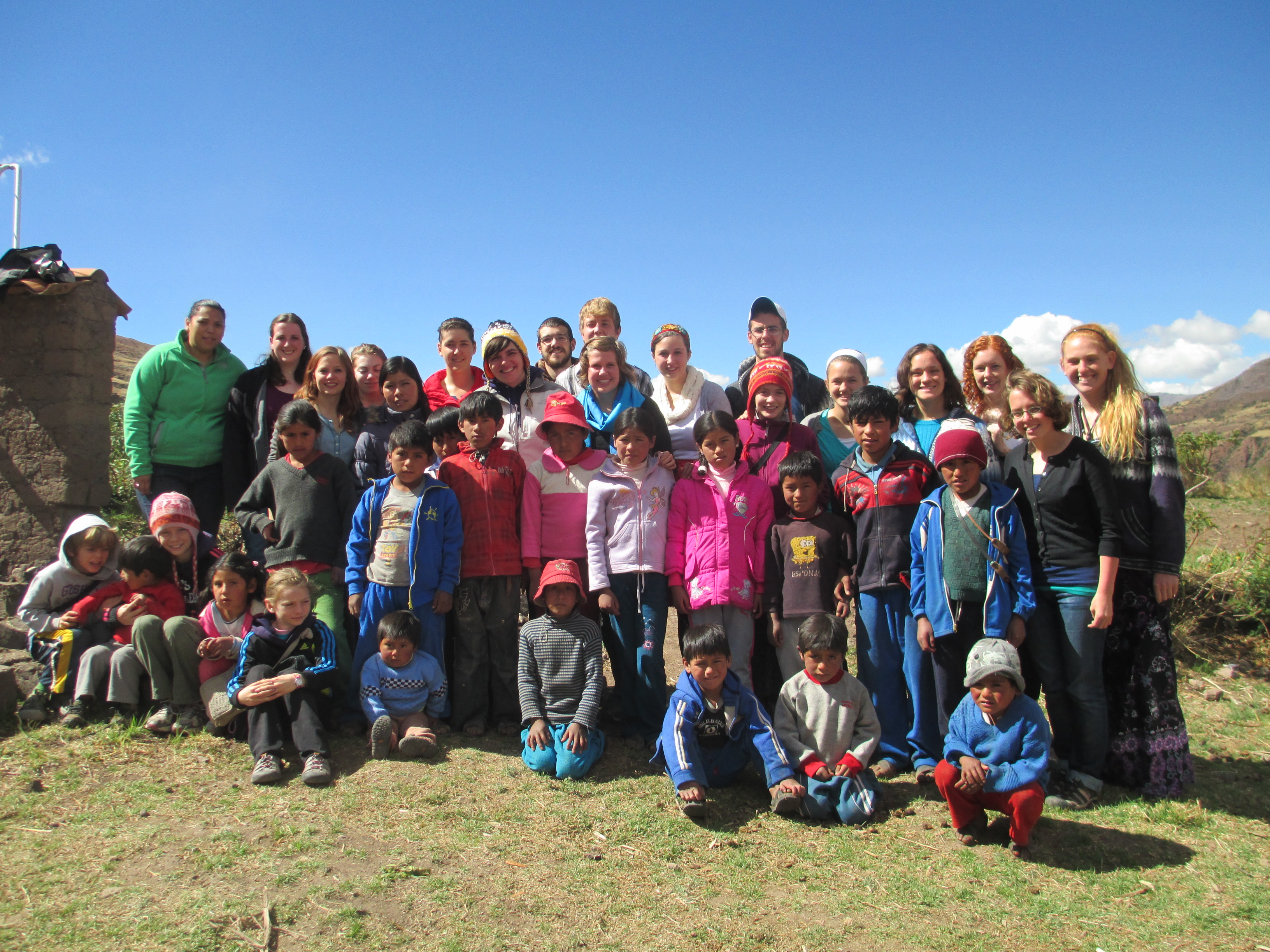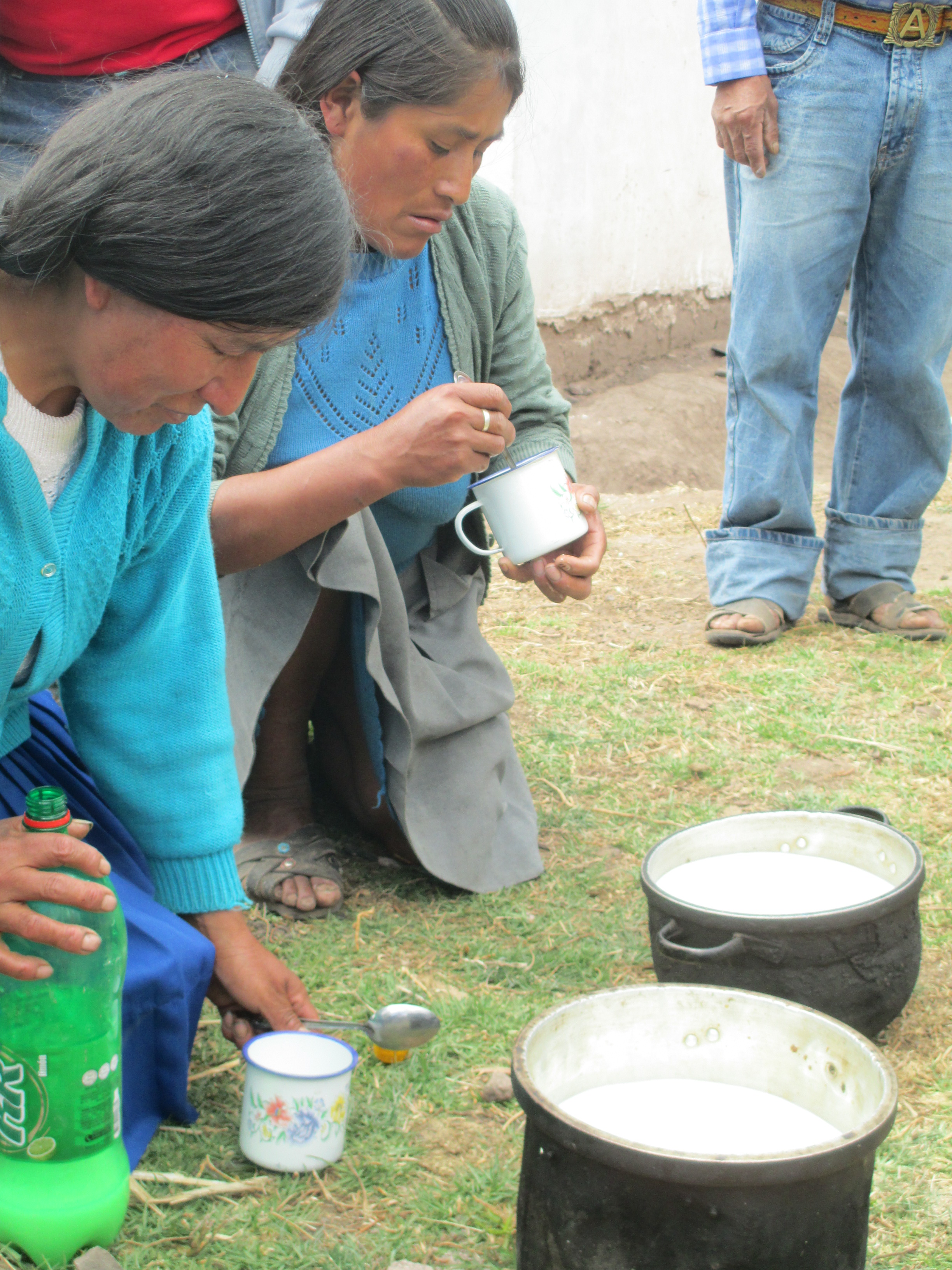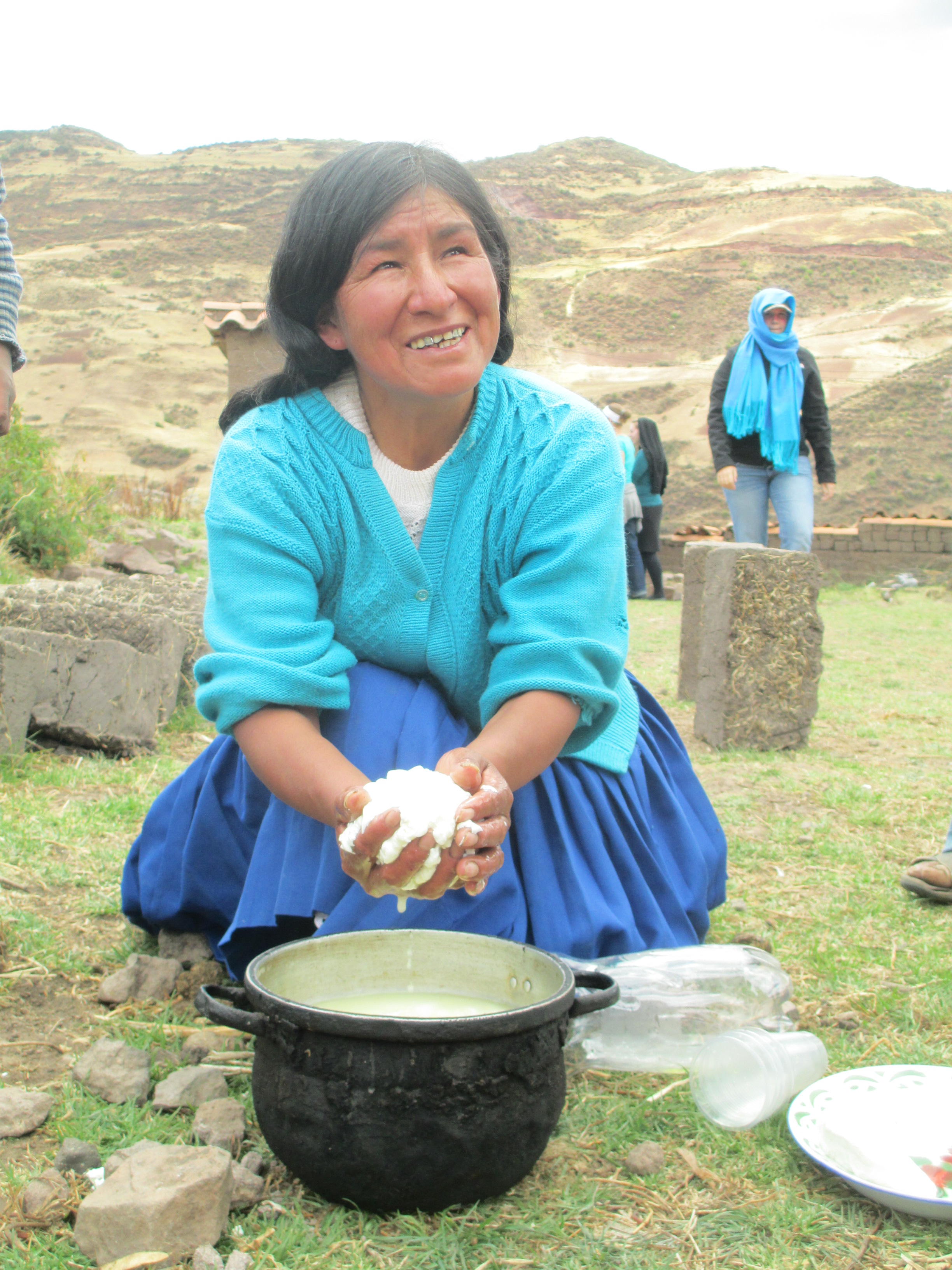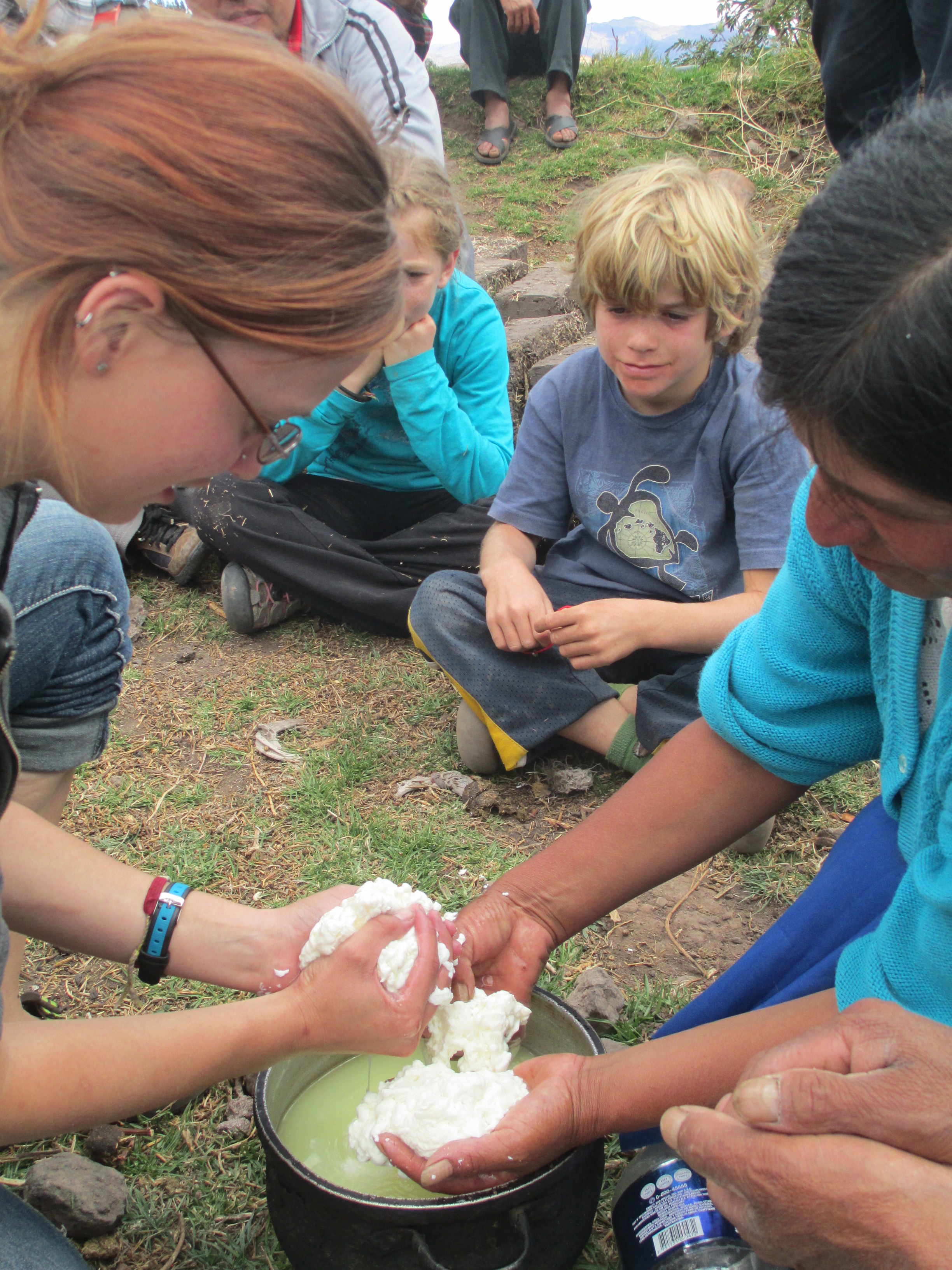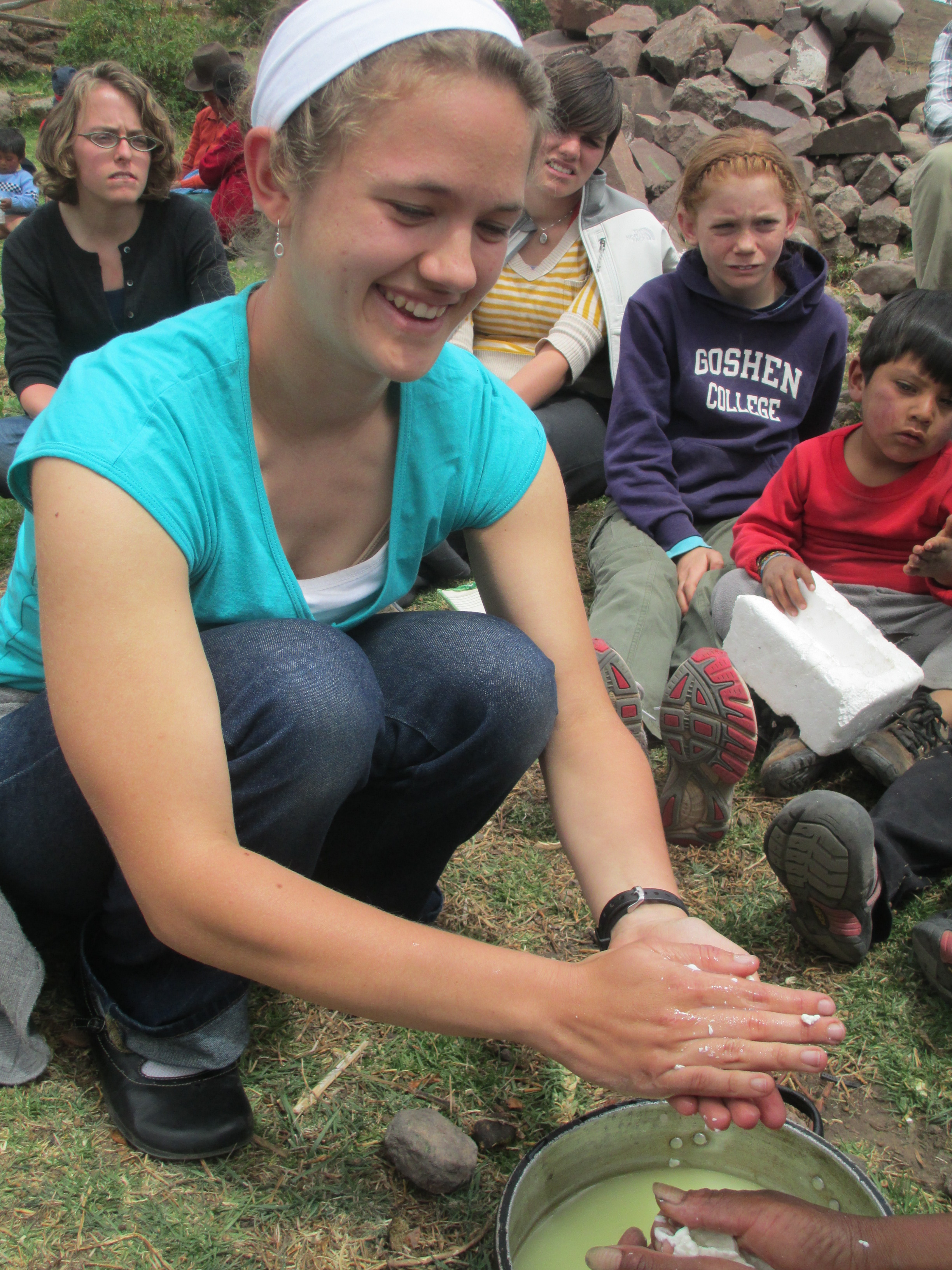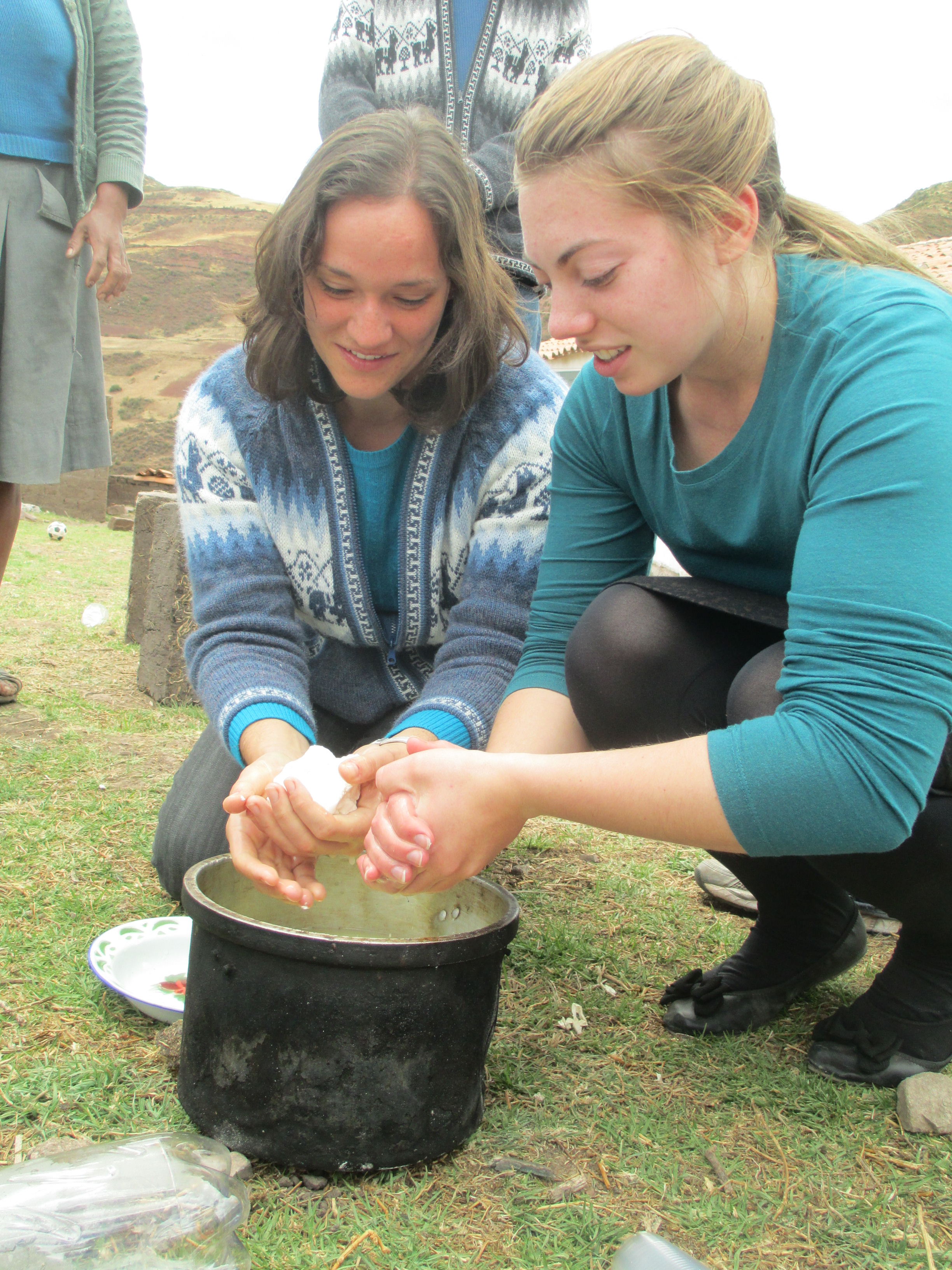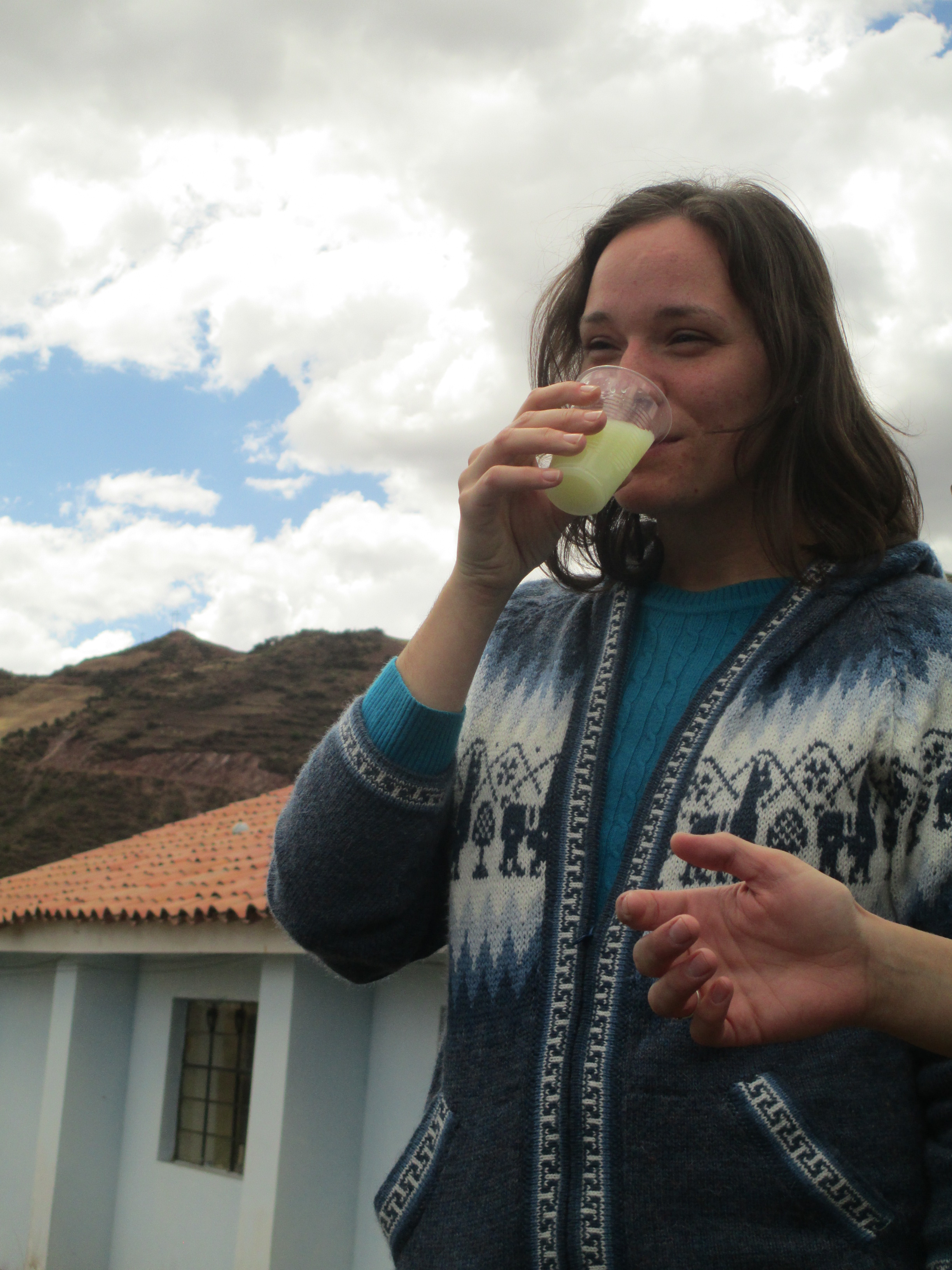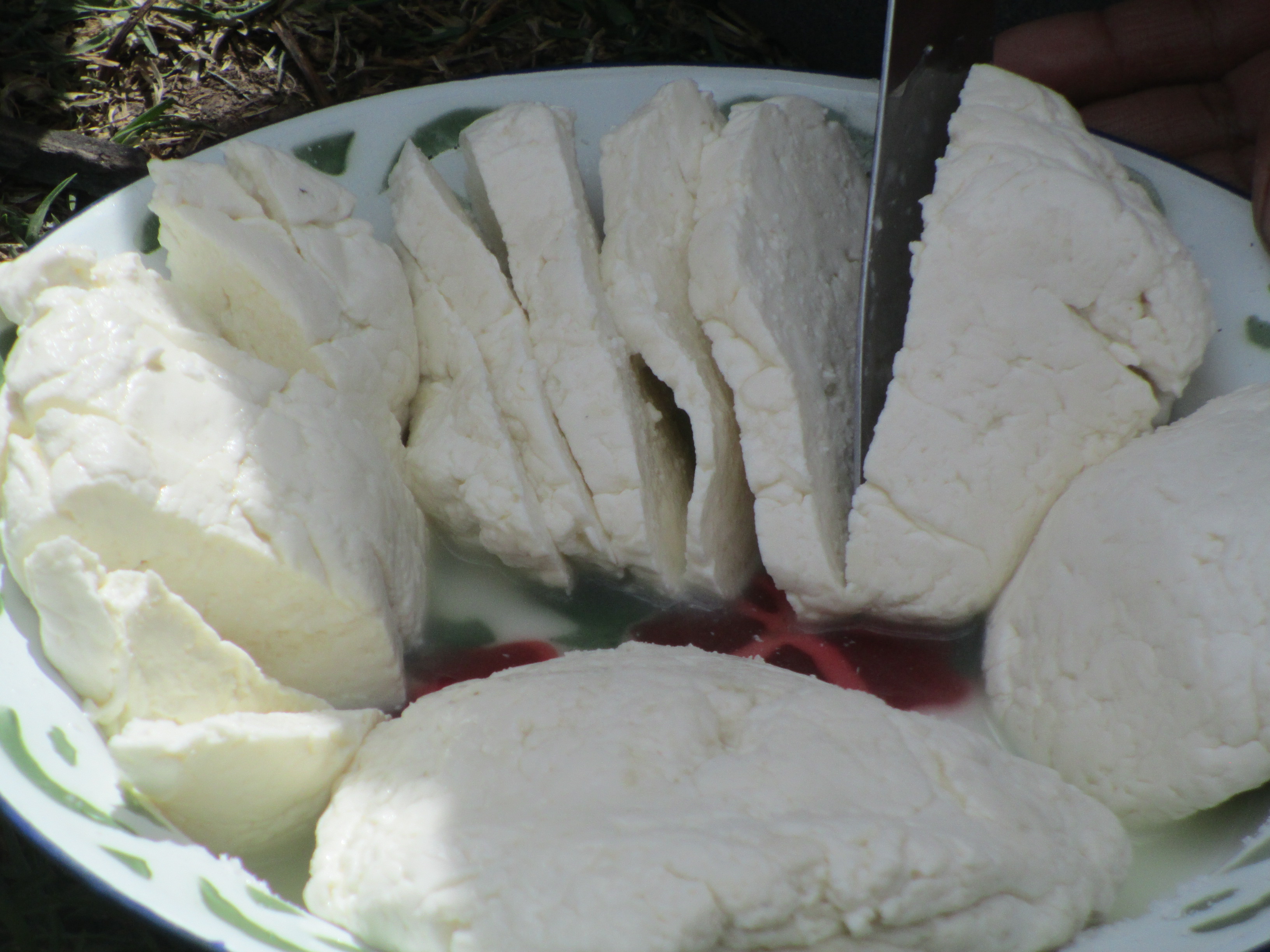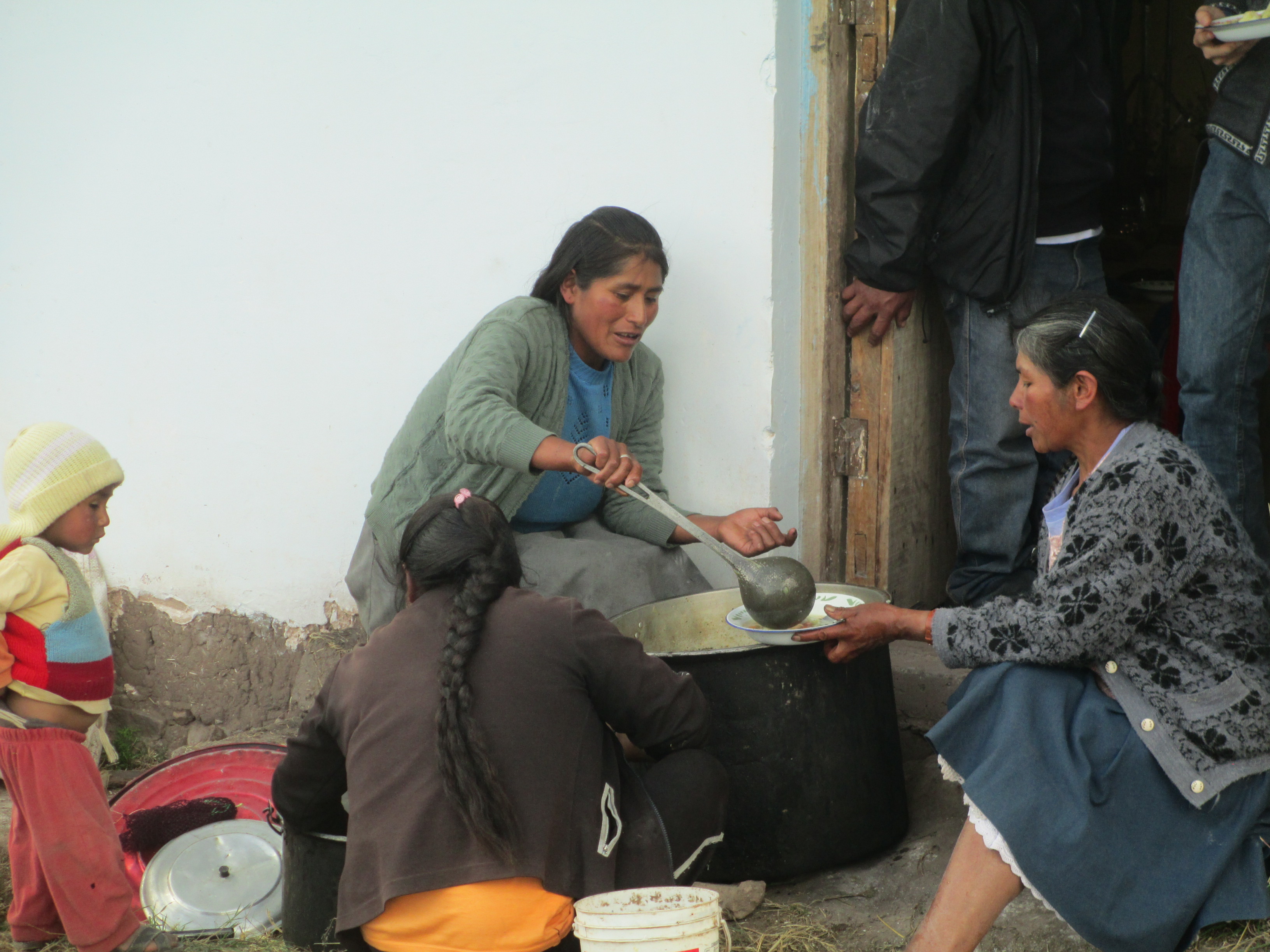Life on the Edge — San Juan de Quihuares
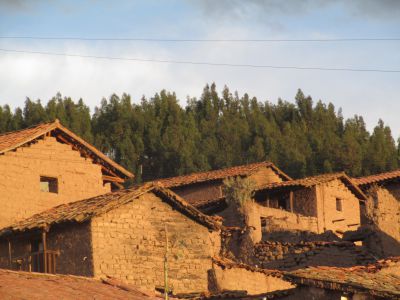
Several million people travel to Cusco each year for a chance to visit Machu Picchu. Indeed, we are among them. But before joining the throngs of international visitors descending into the sacred valley on their pilgrimage toward one of the 7 Wonders of the World, we opted for a detour.
Our destination: a typical Andean village, far off the beaten path, named San Juan de Quihuares.
Our hosts: Pastor Zaqueo and the nine families that comprise San Juan de Quihuares Evangelical Mennonite Church.
Our mission: Experience life and customs, as they have been practiced for centuries, in a place where Andean tradition still lives on. And, if possible, find something helpful to do.
When we arrived in this village of 300 people, we were struck with how peaceful it is. And how steep the pathways are. We climbed up to the village plaza and got a good look around while it was still light. Soon after the sun set we headed back down to the church and host family members began to appear. We made quick introductions and, two-by-two, students walked off into the crisp evening air with their new hosts.
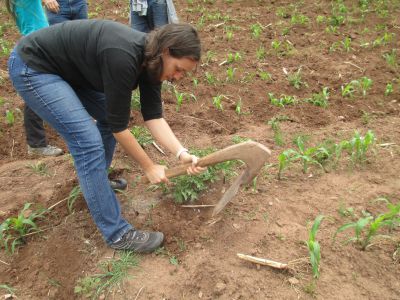
The next day was devoted to work in each family’s fields. October is early Spring on this side of the world, and most of the students assisted with the primera lampa (first hoeing) of the six-inch tall corn stalks. The objective is to move soil from the area between the rows closer to the young plants, giving them more nutrients and surface area for rooting, while simultaneously removing weeds that would soak up valuable nutrients and water. But please don’t remove the wild potatoes, volunteers that show up each year in most fields and provide an age-old source of carbohydrates in the Andean diet!
Sunday is a day of rest for members of the church; excellent timing given the nature of our work the previous day. We gladly volunteered to help out with Sunday School which, it turns out, starts at 7 am. Realizing that most of the children speak Quechua at home and will not learn Spanish until they reach secondary school, we adapted our Bible story into sign language — thanks to a little help and some improvisation from the ASL students. What’s the sign for camel? How about myrrh?

Promptly at 10 am the adults arrived and the singing began. The congregation begins worship with a distinct set of praise songs: Quechua lyrics set to popular huayno tunes. Afterward the pastor asked us to sing some of our own worship songs, so we responded with “Sanctuary” and “Caminamos en la Luz de Dios” (We are Walking in the Light of God). One of the students said a prayer (in English), one of the directors preached a sermon (in Spanish), one of the coordinators translated (into Quechua) and Pastor Zaqueo gave a summary of the message and blessing (in Quechua and Spanish). It is a good thing God is multilingual!
After the service we were treated to a queso fresco (fresh cheese) making demonstration. One batch was made the old-fashioned way, using part of the dried stomach of a calf (rennet?) as the starter, while the other was made using a synthetic starter. Which was better? It depends on your taste — the natural method produces a more flavorful cheese while the chemical method is both quicker and more mild. We followed the cheese tasting with a meal of fresh (butchered this morning) chicken soup served from a single massive pot to the entire assembly of students, parents and children — delicious! Then, alas, we finally rested.

